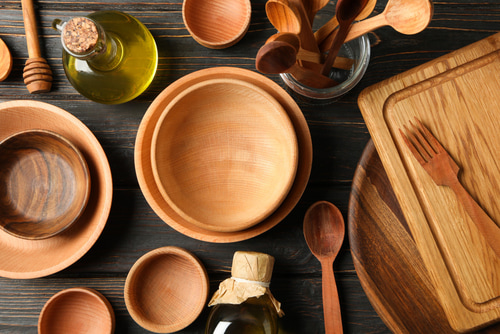Blog
Myths and truths about the safest kitchen materials

When choosing cooking utensils, safety and health are fundamental priorities. However, there is a lot of confusing and even contradictory information about which materials are truly safe for preparing our food. In this article from KuokoKitchen, we’ll clear up common doubts, debunk popular myths, and clarify the facts about the most commonly used kitchen materials. This way, you can make informed decisions for your home and your well-being.
Is aluminum dangerous for cooking?
Myth: Aluminum is toxic and should not be used for cooking because it can release harmful substances.
Truth: Aluminum is a widely used metal in the kitchen, especially for pots, pans, and aluminum foil. Recent studies have shown that aluminum can leach minimal amounts into food when in contact with acidic or salty foods, but these levels are well below the safety limits set by the World Health Organization (WHO). Moreover, most modern aluminum cookware is anodized, meaning it has a protective layer that reduces this migration. Therefore, using anodized aluminum utensils is safe for everyday use.
Is Teflon toxic?
Myth: Non-stick pans with Teflon are dangerous and release toxic gases.
Truth: Teflon is a popular non-stick coating that makes cooking easier by preventing food from sticking. When used properly at moderate temperatures, it is safe. The problem arises if it is overheated (above 260 °C / 500 °F), as it can break down and release harmful gases, which are toxic to birds and potentially irritating to humans. That’s why it’s important not to leave empty Teflon pans over high heat or use metal utensils that can damage the coating. If you take care of your pan, there is no health risk.
Is ceramic always a safe option?
Myth: All ceramic cookware is completely safe and free from heavy metals.
Truth: Ceramic is valued for being a natural and visually appealing material, but its safety depends greatly on the manufacturing process and the glaze used. Some low-quality ceramic products may contain lead or cadmium in the glaze, which can leach into food, especially if the ceramic is cracked or worn. That’s why it’s essential to choose certified cookware from reputable manufacturers. High-quality ceramic is a safe option, but it’s best to avoid unverified products.

Is stainless steel the best option?
Myth: Stainless steel never contaminates or alters food.
Truth: Stainless steel is one of the most widely used and appreciated materials in the kitchen due to its durability, corrosion resistance, and ease of cleaning. It also does not react with food, making it safe for all types of cooking. However, some sensitive individuals may experience allergies or irritation from nickel present in certain stainless steel alloys. Also, if the steel is heavily damaged or scratched, it may release trace amounts of metals. Even so, for most people, stainless steel is an excellent and safe choice.
Are wooden utensils hygienic?
Myth: Wood is a porous material that harbors bacteria and should not be used in kitchen utensils.
Truth: Wood, unlike other materials, has natural antibacterial properties. Scientific studies have shown that certain types of wood reduce the survival of bacteria on their surface faster than plastic or metal. However, it’s important to properly care for wooden utensils: wash with warm water and soap, dry thoroughly, and avoid soaking them for long periods to prevent mold or cracking. With proper maintenance, wooden utensils are a safe and eco-friendly option for your kitchen.
Is plastic safe for cooking?
Myth: Plastic utensils and containers release toxic substances when heated.
Truth: Not all plastics are the same. Some plastics are specifically designed to withstand high temperatures and are safe for cooking and food storage (such as those labeled microwave- and dishwasher-safe). However, low-quality plastics or those not intended for cooking may release harmful compounds like BPA or phthalates when heated. Therefore, it’s essential to always use food-grade certified plastic products and avoid heating plastics that don’t specify thermal resistance.
Which material should you choose for your utensils?
Each material has specific advantages and precautions. For daily use, a balanced combination is usually the best option:
- Stainless steel for pots, pans, and durable utensils.
- Ceramic or glass for oven and microwave cooking, as long as they are high quality.
- Wood for utensils like spoons or cutting boards, with proper care.
- Anodized aluminum for lightweight cookware, avoiding prolonged cooking of highly acidic foods.
- Certified plastics only for storage or specific uses, never for high-temperature cooking.
- Non-stick pans with Teflon used moderately and with care to prevent damage.
The key is to understand the materials well, choose certified products, and use them according to recommendations to protect your health and fully enjoy cooking.
Would you like help choosing the best utensils for your needs? In our online store, you’ll find quality products carefully selected with your safety and comfort in mind. Start cooking with peace of mind and flavor!


